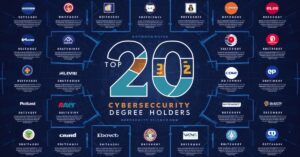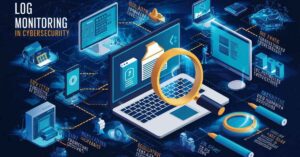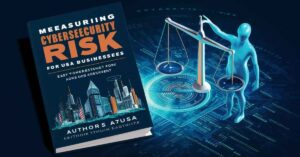The digital frontier presents unprecedented opportunities and formidable challenges in today’s interconnected landscape. As our lives become increasingly intertwined with technology, the need for robust cybersecurity measures has never been more critical. This article delves into the multifaceted world of cyber security, exploring its impact on our digital existence and the strategies employed to protect our virtual assets. What is Cyber Security and What is its Impact on the Digital World?
Understanding Cyber Security
Cyber security encompasses the practices, technologies, and processes designed to protect networks, devices, programs, and data from attack, damage, or unauthorized access. As digital threats evolve, so too must our defenses. The importance of cyber security has grown exponentially, mirroring the rapid digitization of our personal and professional lives.
“Cyber security is a shared responsibility, and it boils down to this: in cyber space, we have to look out for each other.” – Dan Coats, Former U.S. Director of National Intelligence
The cyber threat landscape is constantly shifting, with new vulnerabilities and attack vectors emerging daily. From nation-state actors to lone hackers, the motivations behind cyber attacks are as diverse as the methods employed. This dynamic environment necessitates a proactive and comprehensive approach to security. What is Cyber Security and What is its Impact on the Digital World?
Types of Cyber Security Practices and Methods
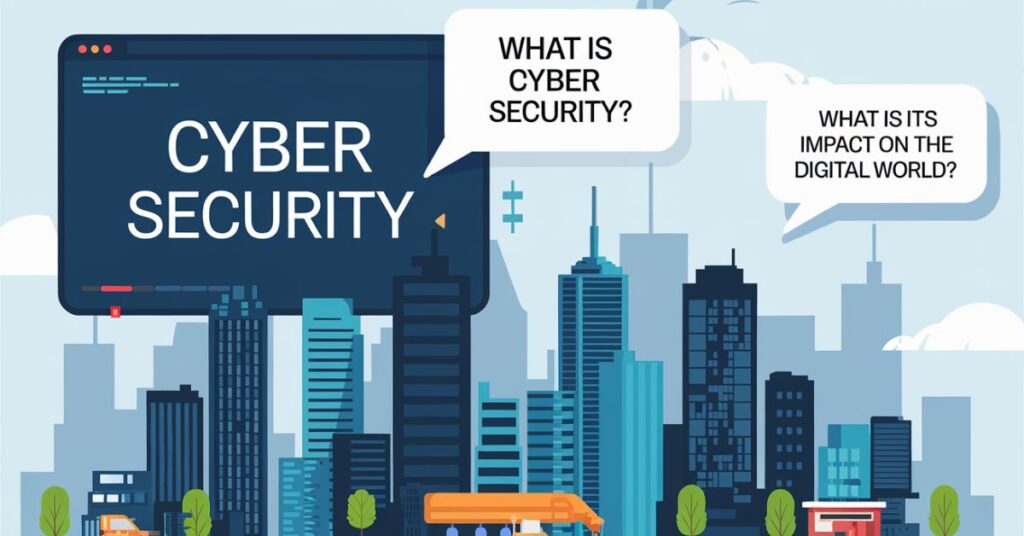
To combat the myriad of threats, organizations and individuals must employ a multi-layered security strategy. Let’s explore the various facets of cyber security:
Optimal Infrastructure Security
Infrastructure security forms the foundation of a robust cyber defense. It encompasses:
- Physical safeguards: Secure server rooms, biometric access controls, and surveillance systems
- Access control systems: Multi-factor authentication and role-based access control
- Environmental controls: Fire suppression systems, temperature monitoring, and power redundancy
These measures ensure that the physical components of our digital infrastructure remain protected from both malicious actors and environmental hazards. What is Cyber Security and What is its Impact on the Digital World?
Network Security
Network security focuses on protecting the integrity and confidentiality of data as it traverses networks. Key components include:
- Firewalls and intrusion detection systems
- Virtual Private Networks (VPNs)
- Network segmentation
By implementing these tools and strategies, organizations can significantly reduce their attack surface and detect potential threats before they cause damage. What is Cyber Security and What is its Impact on the Digital World?
Application Security
With the proliferation of software in every aspect of our lives, application security has become paramount. This involves:
- Secure coding practices
- Regular security testing and audits
- Patch management
Developers must prioritize security throughout the software development lifecycle to minimize vulnerabilities that could be exploited by attackers.
Cloud Security
As businesses increasingly migrate to the cloud, securing these environments has become crucial. Cloud security encompasses:
- Data encryption in transit and at rest
- Identity and access management
- Compliance and governance in cloud environments
Cloud providers and users must work in tandem to ensure that data remains protected in these shared environments.
Information Security
Information security focuses on protecting data itself, regardless of where it resides. Key aspects include:
- Data classification
- Encryption techniques
- Information lifecycle management
By implementing robust information security practices, organizations can safeguard their most valuable asset: their data.
End-user Education
Human error remains one of the most significant vulnerabilities in any security system. End-user education is vital and includes:
- Security awareness training
- Phishing simulations
- Best practices for personal device usage
Empowering users with knowledge is often the most effective defense against social engineering attacks.
Disaster Recovery and Management Policy
Even with the best defenses, breaches can occur. A comprehensive disaster recovery plan is essential and should include:
- Backup strategies
- Business continuity planning
- Incident response protocols
These measures ensure that organizations can quickly recover and resume operations in the event of a successful attack.
Common Cyber Security Threats to Consider While Creating the Strategy
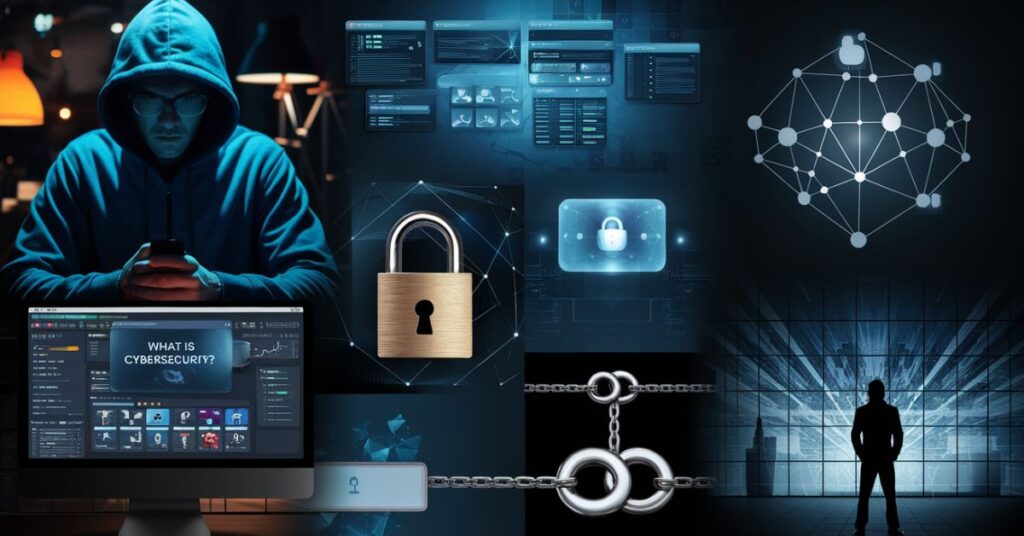
Understanding the threat landscape is crucial for developing an effective cybersecurity strategy. Here are some of the most prevalent threats:
Malware
Malware, short for malicious software, comes in many forms:
| Type of Malware | Description | Common Examples |
|---|---|---|
| Viruses | Self-replicating programs that spread by inserting copies of themselves into other executable code or documents | Melissa, ILOVEYOU |
| Worms | Stand-alone malware that replicates itself to spread to other computers | WannaCry, Slammer |
| Trojans | Malware that disguises itself as legitimate software | Zeus, Emotet |
Prevention strategies include regular software updates, robust antivirus solutions, and user education.
EMOTET
EMOTET is a particularly sophisticated form of malware that deserves special attention. Originally designed as a banking Trojan, it has evolved into a distributor for other malware families.
Key characteristics of EMOTET:
- Highly modular structure
- Uses botnet infrastructure for distribution
- Employs social engineering tactics
Defending against EMOTET requires a multi-layered approach, including email filtering, network segmentation, and regular security awareness training.
Phishing / Social Engineering
Phishing attacks exploit human psychology to trick individuals into revealing sensitive information or taking harmful actions. These attacks often:
- Mimic trusted entities
- Create a sense of urgency
- Exploit emotional triggers
Building user resilience through regular training and simulations is crucial in combating these threats.
Distributed Denial of Service / DDoS Attacks
DDoS attacks aim to overwhelm systems, making them unavailable to legitimate users. These attacks can be devastating, causing significant financial and reputational damage.
DDoS mitigation techniques include:
- Traffic analysis and filtering
- Content delivery networks (CDNs)
- Cloud-based mitigation services
Man in the Middle Attacks
Man in the Middle (MITM) attacks occur when an attacker intercepts communications between two parties. Common scenarios include:
- Unsecured public Wi-Fi networks
- Compromised routers
- SSL stripping attacks
Prevention measures focus on encryption, secure communication protocols, and user education about the risks of unsecured networks.
How Digital Access Impacts Various Areas of Cybersecurity
The proliferation of digital access points has significantly altered the cybersecurity landscape:
- Increased attack surface: More devices mean more potential entry points for attackers.
- Challenges in securing diverse devices: IoT devices, in particular, often lack robust security features.
- Opportunities for improved security awareness: Widespread digital access allows for broader dissemination of security best practices.
As our digital footprint expands, so too must our security measures evolve to protect an ever-growing ecosystem of connected devices and services.
The Best Cyber Security Technology to Tackle Such Threats
To combat evolving threats, organizations are turning to cutting-edge technologies:
- Artificial Intelligence and Machine Learning: These technologies enable rapid threat detection and response, often identifying anomalies before human analysts can.
- Blockchain: While primarily known for cryptocurrencies, blockchain technology offers enhanced data integrity and secure transactions.
- Zero Trust Architecture: This security model operates on the principle of “never trust, always verify,” requiring authentication for every access attempt.
- Next-generation firewalls and endpoint protection: These advanced solutions offer more comprehensive protection against sophisticated threats.
Case Study: The SolarWinds Hack
The SolarWinds hack of 2020 serves as a stark reminder of the far-reaching consequences of cyber attacks. This sophisticated supply chain attack compromised thousands of organizations, including U.S. government agencies.
Key takeaways from the SolarWinds incident:
- The importance of vetting third-party software and services
- The need for continuous monitoring and threat-hunting
- The value of segmentation in limiting the spread of breaches
This incident underscores the interconnected nature of our digital world and the potential for cascading effects from a single breach.
Conclusion
As we navigate an increasingly digital world, the importance of robust cybersecurity measures cannot be overstated. From individual users to large corporations and government entities, everyone has a role to play in safeguarding our digital future.
By understanding the threats we face, implementing comprehensive security strategies, and leveraging cutting-edge technologies, we can build a more resilient digital ecosystem. However, the landscape of cyber security is ever-evolving, requiring constant vigilance and adaptation.
As we look to the future, international cooperation and continued innovation will be key in staying ahead of cyber threats. The digital world offers immense opportunities, but only by prioritizing security can we fully realize its potential while mitigating its risks.
FAQs
Q: How does digital access impact various areas of cybersecurity?
Digital access significantly impacts cybersecurity by:
- Expanding the attack surface through numerous connected devices
- Necessitating diverse security measures to protect various types of devices and data
- Highlighting the importance of user education in maintaining overall security
Q: What is the impact of digitization on cybersecurity?
Digitization has profoundly affected cybersecurity by:
- Increasing vulnerability due to the sheer volume of digital assets
- Creating new attack vectors as more systems become interconnected
- Driving the development of advanced defense mechanisms to combat sophisticated threats
Q: How does the digital divide impact cybersecurity?
The digital divide influences cybersecurity in several ways:
- Creating uneven security awareness across different populations
- Resulting in varied levels of protection, with some groups more vulnerable than others
- Potentially allowing cybercriminals to exploit less-secured regions or demographics
Q: How has technology affected cyber security?
Technology has transformed cyber security by:
- Enhancing threat detection capabilities through AI and machine learning
- Enabling more sophisticated attack methods, necessitating equally advanced defenses
- Driving the continuous evolution of security measures to keep pace with emerging threats

